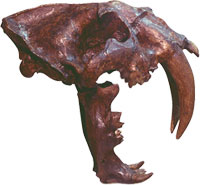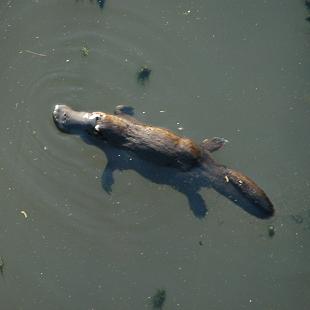|
|
|

Fundamentalists Hate Noah's Ark
By Phil Gillette
Posted on: 8/15/2007
|
The story of Noah and the Ark leaves much to be desired, from many different fields of knowledge.
|
 ’Tis true, dear friends, ’tis all too true. They loathe, despise, and outright hate that wretched Flood and it’s associated Ark with a malevolence usually reserved for Communists, Democrats, gays, atheists, sex because it feels good, anyone named Clinton, and those who accept the Theory of Evolution, whatever their names & titles. ’Tis true, dear friends, ’tis all too true. They loathe, despise, and outright hate that wretched Flood and it’s associated Ark with a malevolence usually reserved for Communists, Democrats, gays, atheists, sex because it feels good, anyone named Clinton, and those who accept the Theory of Evolution, whatever their names & titles.
Of course, you’ll never get the first of ’em to admit that.
It is extremely difficult, nay impossible, to defend the Noachian Flood Story as anything other than a myth; a yarn to be spun and passed on by nomadic, tribal elders around the evening fire. All one needs to do is study the geologic record to cast fatal doubt upon it. Such an event in the so-recent past would have left a huge and unmistakable imprint upon the world; indeed, it would show up all over the world, explainable by no other process. But no such imprint exists, and we’ll be getting into that a little farther along.
Let us begin with simple logistics. The Ark is alleged to have been somewhere between four and six hundred feet long, depending upon which version of the cubit one might prefer — there were several in use at the time, varying widely in dimension. A vessel of this description is not all that easily built.
Scrimshaw on sperm whale’s tooth,
by David Adams.
Used with permission. |
It would require saw pits, smithies, foundries, rope-walks, cranes and other heavy-lifting devices, and all of the other facilities found in a large, early shipyard. It would have required a master shipwright and a construction crew with experience. And it would require a vast amount of timber to be harvested and processed in a land not noted for its forests. And lest we forget, in the days of the Ark there was little more than Bronze Age technology.
The largest clipper ship ever built is said to have been the Great Republic. She was somewhere, depending upon whose account you read, between 320 and 350 feet long with quite a wide beam to increase cargo space. She was relatively slow and in spite of oak construction, iron bracing and multiple keelsons, her hull hogged and sagged enough to render her a chronic leaker. She was only moderately successful and ultimately was lost in a tropical storm when the sea came in through her sprung hull strakes. There was some 15 feet of water in her holds when her crew abandoned her.
This vessel was built by Donald McKay, one of the world’s premier shipbuilders, on speculation. She was one of the few mistakes he ever made. While she wasn’t a complete and utter failure, she was never the success envisioned by McKay. Wood is simply not strong enough for a ship of her dimensions, even with a hull design and conformation close to ideal for taking heavy weather. What then of the Ark, with its barge’s hull, suitable only for rivers, coastal and inland waters, and with, by design we are asked to believe, no steerage?
Any deck-ape worth his salt & biscuit can tell you precisely what then: broach, hog, sag, twist, founder and break-up with loss of all hands and cargo in the first hour afloat in the maelstrom! Was landlubber Noah a superior shipwright to Donald McKay? Did he have a skilled crew and the necessary facilities at his disposal? The Bible fails to elaborate.
The oceans are never still, never entirely at rest. Even with a glass-calm surface, currents and eddies, often at odds with each other, move huge volumes of water under that surface. Ships, even the largest of them, roll and toss a bit under any conditions. In the conditions that would have been produced by the described Flood, the waters would be anything but calm; indeed, due to severely disrupted weather patterns, it could conceivably be one category-5 howler after another, or worse, and even a great many (most?) modern ships would not survive that for an unbroken year. Certainly their crews could not. After the first couple of weeks, it would be rather like an endless boxing match with Muhammad Ali in the days when he was known as The Louisville Lip. Any livestock aboard would fare even worse than the crew.
And speaking of the livestock… In my experience, and rather to my amusement, the literalists and apologists go all but berserk over the livestock. Remarkable indeed, are the descriptions of the ways in which eight terrified, seasick people were supposed to have cared for a truly staggering number of eating, defecating, ill-tempered beasts locked in the holds with all but no ventilation and less illumination. One conjecture is that many or most of the animals hibernated.
But, nope. Won’t work. Hibernation in the mammals and reptiles, et al., that do it is triggered by length of daylight as well as decreasing temperatures. Under the artificial conditions in the dismal holds of the Ark, it would not happen. The Institute for Creation Research, of course, begs to differ.

Feeding a rescued baby pangolin.
Photo credit: Sukree Sukplang |
I could be wrong, but I think it was one of the rocket scientists at then Answers in Genesis, Australia (now Creation Ministries International), who came up with the automatic feeding systems fantasy. As I recall though, he never satisfactorily explained how such a system might have worked. But then, no explanation is necessary, really, because with the technology of the day, it wouldn’t have. Even with today’s technology, it would have been excruciatingly complicated because so many animals are specialized feeders. Eucalyptus leaves for the koalas; termites for the pangolins; large, aquatic salamanders for the mud snakes; all of that and much, much more would have had to be gathered and stowed in ship’s stores, then readied for the machine.Mangos for fruit bats and nectar for hummingbirds,
grasses for antelopes, who travel in mighty herds.
carrion for vultures and walruses love claaaaams,
These are a few… Oh, never mind. You get the picture. 
Smilodon fatalis skull.
Photo credit: UC Museum of Paleontology. |
It has been suggested that some sort of artificial feed, rather like super rabbit pellets, might have been developed and would supply the nutritional requirements of all of the animals. It was also stated, with a straight face, that all carnivores could survive quite nicely on a vegetarian diet. Which not begs, but fairly screams the question(s) of: what was the feed’s composition, who made it and how, and how might have Noah persuaded such diverse critters as vampire bats, rattlesnakes, and Smilodon fatalis to eat it?
Odd fact: bee’s honey, even in dilute, is toxic to hummingbirds, so the unfortunate Noah didn’t even have that miniscule easy-way-out. It was nectar and gnats, or nothing.
It might have been that same feeding-machine genius who postulated a sort of center well in the hull for muck removal along with sloping decks to it, because no one in his right mind would voluntarily go down into that horrid pit with a shovel and barrow. I admit it’s been some years since I’ve read the Bible, but I believe that this sort of thing too, was denied mention.
As there was water literally everywhere, there’s little point in mentioning the Ark’s water supplies, so, of course, I must. The tonnage of potable water that this disaster afloat would require is considerable because they certainly could not drink the brackish, polluted stew they were trying to float upon. And the rains only lasted for forty days and nights, so did Noah have a distillery system aboard the Ark? If so, how did he fuel it? And where did he store the water?
But wait! Maybe it wasn’t all that bad. According to what looks to my layman’s eye as a rather convoluted translation of the Hebrew, Noah did not have to take aboard representatives of all species; only their “kinds.” And here is where the migraines set in — what pray, is a kind? All very simple, they tell us. For example, Canine Kind includes dogs, foxes, wolves, jackals and so forth. Thus, Noah only had to take two canines of some sort or other, and leave the rest to drown. Upon landing, this pair would soon diversify into the species we know today — erm, doesn’t that smack just a little bitty of evolution? Yeah, yeah, I know; they’re all still canines, but have you ever compared a cape hunting dog to a kit fox? 
Left: Cape Hunting Dog, Lycaon pictus (photo by Philip Gabrielsen, CCA2.5).
Right: Kit Fox, Vulpes macrotis.
(Images are scaled to match relative body sizes.) |
Or perhaps a hyena to a meerkat. 
Left: Striped Hyena, Hyaena hyaena (photo by Martin Bayer, GNUFDL1.2).
Right: Meerkat, Suricata suricatta.
(Images are scaled to match relative body sizes.) |
These, although of different families, are more closely related to each other than to anything else. If the “Kind” conjecture is to be correct, it would make more sense for Noah to have had their common ancestor aboard. As all species were represented, including extinct ones, that ancestor would have been available.
And then there are the world’s last monotremes, the platypus and the echidna. 
Left: Short-Beaked Echidna, Tachyglossus aculeatus (photo by Peter, GNUFDL1.2).
Right: Platypus, Ornithorhynchus anatinus (photo by Peter Scheunis, CCA1.0).
(Images are scaled to match relative body sizes.) |
These can chart their history and their pedigree back some 150 million years. It would beggar the imagination for them to have diverged so radically, in a 4,000-year (give or take) eye-blink, from a pair of one or the other aboard the Ark. This is exacerbated by their quite low reproductive rate: one kit at a time receiving lengthy parental care.
Let’s look at another pair, even more diverse and remarkable yet. The giant anteater and the nine-banded armadillo. 
Left: Giant Anteater, Myrmecophaga tridactyla (photo by Malene Thyssen, CCAS2.5).
Right: Nine-Banded Armadillo, Dasypus novemcinctus (photo by Rafi B., CCA2.0).
(Images not to scale, the armadillo is about seven times too large.) |
Evolution works in strange ways indeed, but not so mysteriously as sometimes implied. There is simply no way known to science that such radical transitions as those described in Flood apologetics could have taken place in such a brief amount of time, so the logical conclusion is that they never happened. Velvet ants and bald-faced hornets, wolverines and otters, eh? If we chose, we can keep this “Kinds” wheeze rattling along forever.

Megatherium |
But to complicate matters yet further, those long-extinct creatures known only from the rocks must be included, as they too were on the Ark. Or so it is insisted, at any rate. However, that’s not a problem: Dinosaur Kind will work, although I wonder how they might have dealt with the pterosaurs, and especially the early synapsids, which were not even close to being dinosaurs. Megatherium of course, will fit nicely into the modern armadillo/sloth/anteater kind — and all of this “Kind” stuff is starting to make my nose bleed, not to mention being insulting to even minimal intelligence. But never the less, it still has to be a very large bestiary to give the story any sort of kick, mythological or otherwise, so it is necessary to exercise care when assigning Kinds and divvying up the numbers.
In any event, “Kinds” drastically reduces the number of animals necessary to satisfy the story. But that is still an over-plentitude of appetites to satisfy, unless you take it to its logical conclusion with: Mammal Kind, Reptile Kind, Bird Kind, Bug Kind, and the like. Then you can get it into petting zoo range, or smaller if you work at it, but that would water down the story and make it yet more ridiculous.
In these later years, some Bible fundamentalists have edged away from the above. Their latest thought is that Noah took aboard only neonates and juveniles of the various Kinds; thus, less feed, less faeces, less time consumed to deal with both, and best of all, ever so much more room to fit everything into the holds. Silly fundies, you’ve never done wildlife rescue and rehab; never worked in a zoological institution, have you? If you had, you wouldn’t make such preposterous statements. The younger an animal is, particularly mammals and avians, the more care it will require and the more time that care will consume. Hatchlings and sucklings are especially easy to lose. With mammals, many are lost when they are coming off the bottle and begin to lap. Too often, they will aspirate a bit of their formulas, resulting in pneumonia. Hatchling and fledgling birds are quite touchy, as it is often difficult to keep them properly hydrated. Further, temperatures and humidity are critical for all of these, and young reptiles as well. And as we all know, most larval amphibians require water to develop in; clean water.
Juveniles present their own problems, especially when they hit the age when the hormones kick in, i.e.: teenagers. The cute, little canines that came bouncing playfully aboard might turn into a couple of pretty rank customers before the cruise is over. And with many species, all canine species among them, inclusion in the family group is extremely important to the development of the young.
As for having more room in the holds of the Ark, Noah would very soon have had a plethora of it.
But so what? Let us say, just for the argument’s sake, that Noah actually pulled it off. Let us say that he lands that Ark on Mt. Ararat as gently as a feather with all hands hale and hearty, and no freight spoilage to speak of. He orders the gangway lowered and steps out into the long anticipated, so very long anticipated, sweet, fresh, air. Upon the top of that gangway, he pauses. There, he spreads his arms to embrace the cleansed, new world before him and raises his magnificent head with its strong, weary, care-ravaged face. An errant zephyr toys gently with his gray-shot beard as he gazes upward toward the mackerel-sky clouds, and cries out unto the God of his fathers:O Lord… uh… what the hell is this? What are you playing at, here? ARE YOU TRYIN’ TO YANK MY FREAKIN’ CHAIN?! The air is still breathable, yes, perhaps, if you have a taste for undercurrents of swamp gas and sewage, but everything else has gone to rot in the forming sediments (can you imagine what that fossil record would look like were it so? Yow!). The Deluge that made up the Flood has scoured the lands down to the bedrock as if they had been hydraulically mined; then its receding seas covered that rock with a thick layer of noxious sludge that not a single seed could take root in. As there is still a lot of brackish water in the mud, it is impossible to leave the ship — and no where to go, anyway. And as for the air, it might be open to question as to how long it will remain breathable.
There are no plants — even the Cyanobacteria, that vital stepping-stone of life and creator of ancient stromatolites, is in decline. As far as the eye can see, there is a vista of slimy, gray slop, “too thick to drink, too thin to plough,” broken only by the odd outcrop of rock here and there. Gasses, many of them toxic, continue to bubble up from the gumbo as it settles and gradually dries, and Noah knows that it is thus throughout the world. All is gone; he will see none of it return. Of all of the peoples ever upon the Earth, only he and his family have been condemned to this cruelest of punishments, and he will live to suffer it until the age of some 900 years.
End of story… or is it?
Y’know, it’s a peculiar old world. In spite of the utter lack of hard evidence in favor the Flood/Ark story, there are yet some who must try to bring it to life. There are several museums shaped like the Ark, more or less, scattered about. These are pretty much one-theme exhibits that are of little interest except to those who already believe, and the insatiably curious. However, the latest addition to the Old Testament, neo-story-teller’s muster is a little different. This Ark promises to actually float, and your humble correspondent, himself an ex-deck ape, would love to take a cruise on it — provided that it never went out to sea. Humble your correspondent might be, but he is not foolish. The bow on that lash-up looks like it’ll make you swallow your snuff in any kind of a swell.Some people think he’s crazy. His wife’s not exactly thrilled either.
But like the biblical Noah, Dutchman Johan Huibers is steadfast in his mission: he’s building an enormous working replica of Noah’s Ark as a testament to his faith in the literal truth of the Bible.
Townsfolk in Schagen, 45 km north of Amsterdam, frequently stop by to wave hello or just gawk at the huge wooden ship that is nearing completion in the town’s small harbour.
Johan’s Ark is calibrated to be able to pass narrowly under every bridge and through every sluice along his planned sailing route, through the interior waters of the Netherlands to the country’s big cities.
Reckoning by the old biblical measurements, the ark is roughly 150 cubits long by 30 cubits high and 20 cubits wide. That’s nearly 70 metres long, 13.5 metres high, and 9.5 metres wide.
As described in Genesis, Noah used “gopher wood” to build his ark. Johan’s Ark is constructed with American cedar and Norwegian pine — on top of a seaworthy steel hull.
While spectacular, it holds only about a fifth as many cubic cubits as Noah’s would have, according to most biblical scholars.
“And just think, Noah did it alone and without modern tools. It’s unimaginable, no?” says Huibers, an energetic 47-year-old contractor. Unimaginable? Yes… yes, I fear that it is. But our Johan is not utterly mad, no. It is worthy of note that he is using a sound, steel hull, something that Noah and his contemporaries knew nothing about, and this writer, for one, wishes him all luck with it. His Ark will make a fine, weekend entertainment as it cruises about the waterways of Holland. Install a decent restaurant and bar, a modest casino, and… But I digress.
And now… now we must disregard all that I have written above. It is a load of crap; useless rhetoric and hyperbole, every word. You see, it is physically impossible for the Flood to have ever occurred in the first place. To explain, I am pleased to introduce Marty Leipzig, PhD. Doctor Leipzig is a professional oil field geologist and smartass with extensive experience in the Middle East, and who has the indisputable facts of the matter at his very fingertips. If you please, sir, the podium is yours:
Date: 09-02-99 10:11
From: Marty Leipzig
Hey, Georgie. The cretinists at the ICR, AIG, CRC and a half-dozen other fundy-run
shill organizations absolutely insist on the Flood of Noah being global (meaning
ALL the world, to your limited deference). To them, your claim that it was local
makes you the infidel.
Shocking. When you're obviously nothing more than a nescient schmuck.
Hell, I'm just taking what they claim and agreeing it to death.
Viz:
First - the global flood supposedly (Scripturally) covered the planet, (see that,
George? If so, why are you still being so stupid?) and Mount Everest is 8,848
meters tall. The diameter of the Earth at the equator, on the other hand, is
12,756.8 km. All we have to do is calculate the volume of water to fill a sphere
with a radius of the Earth plus Mount Everest; then we subtract the volume of a
sphere with a radius of the Earth. Now, I know this won't yield a perfect result,
because the Earth isn't a perfect sphere, but it will serve to give a general idea
about the amounts involved.
So, here are the calculations:
First, Everest:
V = 4/3×pi×r3
= 4/3×pi×6387.248 km3
= 1.09151×1012 km3
Now, the Earth at sea level:
V = 4/3×pi×r3
= 4/3×pi×6378.4 km3
= 1.08698×1012 km3
The difference between these two figures is the amount of water needed to just
cover the Earth: 4.525×109 Or, to put into a more sensible number,
4,525,000,000,000 cubic kilometres. This is one helluva lot of water.
For those who think it might come from the polar ice caps, please don't forget
that water is more dense than ice, and thus that the volume of ice present in
those ice caps would have to be more than the volume of water necessary.
Some interesting physical effects of all that water, too. How much weight do you
think that is? Well, water at STP weighs in at 1 gram/cubic centimetre (by
definition), so:
4.525×109 km3 of water,
×109 (cubic meters in a cubic kilometer),
×106 (cubic centimetres in a cubic meter),
×1 g/cm3 (denisty of water),
×10-3 (kilograms),
(turn the crank)
equals 4.525×1021 kg
Ever wonder what the effects of that much weight would be? Well, many times in
the near past (i.e., the Pleistocene), continental ice sheets covered many of
the northern states and most all of Canada. For the sake of argument, let's say
the area covered by the Wisconsinian advance (the latest and greatest) was
10,000,000,000 (ten million) km2, by an average thickness of 1 km of ice
(a good estimate... it was thicker in some areas [the zones of accumulation]
and much thinner elsewhere [at the ablating edges]).
Now, 1.00×107 km2 times 1 km thickness equals 1.00×107 km3 of ice.
Now, remember earlier that we noted that it would take 4.525×109 km3 of
water for the Flood? Well, looking at the Wisconsinian glaciation, all that ice
(which is frozen water, remember?) would be precisely 0.222% [...do the math]
(that's zero decimal two hundred twenty two thousandths) percent of the water
needed for the flood.
Well, the Wisconsinian glacial stade ended about 25,000 YBP (years before present),
as compared for the approximately supposedly 4,000 YBP flood event.
Due to these late Pleistocene glaciations (some 21,000 years preceding the supposed
flood), the mass of the ice has actually depressed the crust of the Earth. That
crust, now that the ice is gone, is slowly rising (called glacial rebound); and
this rebound can be measured, in places (like northern Wisconsin), in centimetres-
per-year. Sea level was also lowered some tens of meters due to the very finite
amount of water in the Earth's hydrosphere being locked up in glacial ice sheets
(geologists call this glacioeustacy).
Now, glacial rebound can only be measured, obviously, in glaciated terranes, i.e.,
the Sahara is not rebounding as it was not glaciated during the Pleistocene. This
lack of rebound is noted by laser ranged interferometery and satellite geodesy [so
there], as well as by geomorphology. Glacial striae on bedrock, eskers, tills,
moraines, rouche moutenees, drumlins, kame and kettle topography, fjords, deranged
fluvial drainage and erratic blocks all betray a glacier's passage. Needless to say,
these geomorphological expressions are not found everywhere on Earth (for instance,
like the Sahara). Therefore, although extensive, the glaciers were a local (not
global) is scale. Yet, at only 0.222% the size of the supposed flood, they have had
a PROFOUND and EASILY recognisable and measurable effects on the lands.
Yet, the supposed flood of Noah, supposedly global in extent, supposedly much more
recent, and supposedly orders of magnitude larger in scale; has exactly zero
measurable effects and zero evidence for it's occurrence.
Golly, Wally. I wonder why that may be...?
Further, Mount Everest extends through 2/3 of the Earth's atmosphere. Since two
forms of matter can't occupy the same space, we have an additional problem with the
atmosphere. Its current boundary marks the point at which gasses of the atmosphere
can escape the Earth's gravitational field. Even allowing for partial dissolving of
the atmosphere into our huge ocean, we'd lose the vast majority of our atmosphere
as it is raised some 5.155 km higher by the rising flood waters; and it boils off
into space.
Yet, we still have a quite thick and nicely breathable atmosphere. In fact, ice
cores from Antarctica (as well as deep-sea sediment cores) which can be
geochemically tested for paleoatmospheric constituents and relative gas ratios; and
these records extend well back into the Pleistocene, far more than the supposed
4,000 YBP flood event. Strange that this major loss of atmosphere, atmospheric
fractionation (lighter gasses - oxygen, nitrogen, fluorine, neon, etc. - would
have boiled off first in the flood-water rising scenario, enriching what remained
with heavier gasses - argon, krypton, xenon, radon, etc.), and massive
extinctions from such global upheavals are totally unevidenced in these cores.
Even further, let us take a realistic and dispassionate look at the other claims
relating to global flooding and other such biblical nonsense.
Particularly, in order to flood the Earth to the Genesis requisite depth of 10
cubits (~15' or 5 m.) above the summit of Mt. Ararat (16,900' or 5,151 m AMSL), it
would obviously require a water depth of 16,915' (5,155.7 m), or over three miles
above mean sea level. In order to accomplish this little task, it would require
the previously noted additional 4.525×109 km3 of water to flood the Earth to this
depth. The Earth's present hydrosphere (the sum total of all waters in, on and
above the Earth) totals only 1.37×109 km3. Where would this additional
4.525×109 km3 of water come from? It cannot come from water vapour (i.e., clouds)
because the atmospheric pressure would be 840 times greater than standard pressure
of the atmosphere today. Further, the latent heat released when the vapour
condenses into liquid water would be enough to raise the temperature of the
Earth's atmosphere to approximately 3,570 C (6,460 F).
Someone, who shall properly remain anonymous, suggested that all the water needed
to flood the Earth existed as liquid water surrounding the globe (i.e., a "vapour
canopy"). This, of course, is staggeringly stupid. What is keeping that much water
from falling to the Earth? There is a little property called gravity that would
cause it to fall.
Let's look into that from a physical standpoint. To flood the Earth, we have
already seen that it would require 4.525×109 km3 of water with a mass of
4.525×1021 kg. When this amount of water is floating about the Earth's
surface, it stored an enormous amount of potential energy, which is converted to
kinetic energy when it falls, which, in turn, is converted to heat upon impact
with the Earth. The amount of heat released is immense:
Potential energy: E=MgH, where
M = mass of water,
g = gravitational constant and,
H = height of water above surface.
Now, going with the Genesis version of the Noachian Deluge as lasting 40 days and
nights, the amount of mass falling to Earth each day is 4.525×1021 kg/40 24-hr.
periods. This equals 1.10675×1020 kilograms daily. Using H as 10 miles (16,000
meters), the energy released each day is 1.73584×1025 joules. The amount of energy
the Earth would have to radiate per m2/sec is energy divided by surface area of the
Earth times number of seconds in one day. That is:
e = 1.735384×1025/(4×3.14159×((63862)×86,400))
e = 391,935.0958 j/m2/s
Currently, the Earth radiates energy at the rate of approximately 215 joules/m2/sec
and the average temperature is 280 K. Using the Stefan-Boltzman 4th-Power Law to
calculate the increase in temperature:
E (increase)/E (normal) = T (increase)/T4 (normal)
E (normal) = 215
E (increase) = 391,935.0958
T (normal) = 280.
Turn the crank, and T (increase) equals 1,800 K.
The temperature would thusly rise 1,800 K, or 1,526.84 C (that's 2,780.33 F...
lead melts at 880 F...). It would be highly unlikely that anything short of fused
quartz would survive such an onslaught. Also, the water level would have to rise
at an average rate of 5.5 inches/min; and in 13 minutes would be in excess of six
feet deep.
Finally, at 1800 K water would not exist as liquid.
It is quite clear that a Biblical Flood is and was quite impossible. Only fools
and those shackled by dogma would insist otherwise. |
And that is why Biblical fundamentalists hate the Flood and wish that Noah fellow had kept to tending his sheep. Thank you Doctor, for a most enlightening presentation.
For some wondrous Flood apologetics, look here and here.A knowledge of the true age of the earth and of the fossil record makes it impossible for any balanced intellect to believe in the literal truth of every part of the Bible in the way that fundamentalists do. And if some of the Bible is manifestly wrong, why should any of the rest of it be accepted automatically?
— Francis Crick, British biophysicist, who helped determine the structure of DNA
Read or Add Comments about this Article
|
|
|
Back to Creation/Evolution
|
![]()